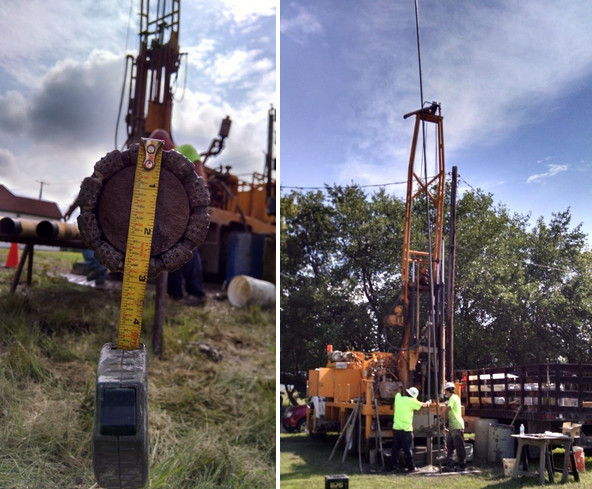
Since April 2013, several local companies have been contracted to conduct geotechnical investigations for the DRIC / NITC project. The work is required to further develop foundations design for the main bridge span, approach bridges, plaza buildings and I-75 interchange structures. It will also be used to provide the eventual public-private partnership bidders sufficient information to determine the type of bridge that would best work for the given ground conditions in the crossing area. This is necessary as the two main bridge types (cable stayed and suspension) have different configurations and the P3 bidders will need the geotechnical data to help select the type of bridge that would be most appropriate for the location.
More than 170 total boreholes will be drilled (approx 36 in Windsor and 140 in Detroit. Drilling depth ranges from 40 to 50 metres (130 to 165 feet) below ground surface. Two vibrating wire ‘piezometers’, which measure the groundwater levels at the boring locations, are used at each location. One is positioned at various depths within the bedrock strata while the second one is positioned in the soil.
This engineering study differs from the geotechnical investigation that was undertaken as part of the environmental assessment phase of the project. That study concluded that the geotechnical conditions on the bridge site could support the bridge piers.
The work on the United States side of the project is being conducted by FK Engineering Associates, working as a sub-consultant to the lead geotechnical firm on the project, Golder Associates of Canada.



